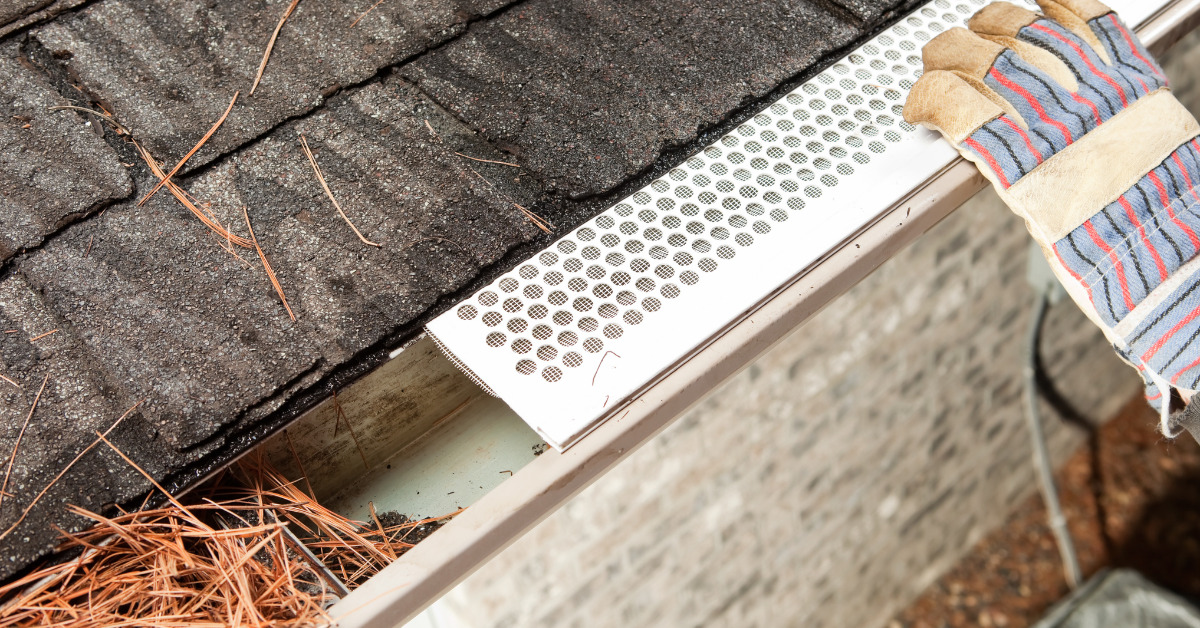If the gutters on your home do not have a gutter guard or leaf catcher installed, debris can collect in the gutters, clogging downspouts and creating spillovers. These spillovers and clogs are not only damaging to your home, but they can also create very hazardous conditions, especially in the winter.
Here in Southeast PA, with our constant freezing and thawing cycle in the winter, rain or melting snow can form puddles under clogged gutters, which subsequently freeze and create a safety hazard. This moisture can also seep into and around the foundation, causing damage from the continual expansion and contraction of freezing and thawing water.
Clogged gutters and downspouts can cause further damage by allowing moisture to seep into walls, under the eaves, and into the roof and attic. No part of your home is safe from water damage if the lowly and often-forgotten gutters are left unattended.
At M&K Renovations, we’ve seen all these forms of damage caused by clogged, bent, or damaged gutters. New gutter installation generally is not an expensive project, compared to other home projects, but has a tremendous positive impact on the safety of the home. If your gutters are in good shape, adding a gutter guard of some kind can protect them and your home.
Different kinds of gutter guards
Different guards and leaf catchers have different purposes and different levels of effectiveness. Talk to us about your particular situation to determine which is best for you. Some guards work well if you are surrounded by broadleaf trees, such as maples or oaks, but do not catch pine needles well. Some work well on low-sloped roofs but are less efficient on roofs with a steep pitch. Guards and leaf catchers also vary greatly in price.
Screens are fairly inexpensive and easy to install. Homeowners who have the right equipment or who have low gutters often install these themselves. Screens can vary in material and style, from perforated sheets of metal or PVC to micro mesh. Fine mesh is very effective at keeping out debris; however, it can get clogged by moss, mold, or tar from asphalt roofs.
Solid-top gutter guards are sleek-looking. Water flows across them from the roof, and because of surface tension, the water follows the curve of the top into the gutter below, but debris drops right off the edge to the ground. Some solid-tops are more effective than others, so talk to an expert about which would be best for your house. For instance, while solid-tops guard against debris well, they do not work as well at preventing run-off from metal or steeply sloped roofs, because the water runs too quickly for all of it to be caught by surface tension into the trough below.
Gutter inserts are an economical option. A gutter brush looks like a long, stiff bottle brush that fills the gutter. It’s simple to install, allows water to flow easily, and catches most debris. You will need to pull it out and shake the debris loose fairly frequently, so if you live near trees, it may not be the best choice.
Foam inserts are wedge-shaped and fit snugly into the gutter. Water goes through, debris blows off. Another kind of guard looks a lot like a dish-scrubbing pad. This woven nylon mat slips into the gutter, creating a slight dome, which allows water through while debris passes over it.
Call us for a free inspection of your gutters. If they are in good condition but have no guards, we can advise you on which kind may work best for your home and your budget. If you need new gutters, we recommend you protect them with a leaf guard or insert of some kind. Reach out to us at our office on the Main Line, (610) 353-2895. We service Philadelphia and surrounding areas.


